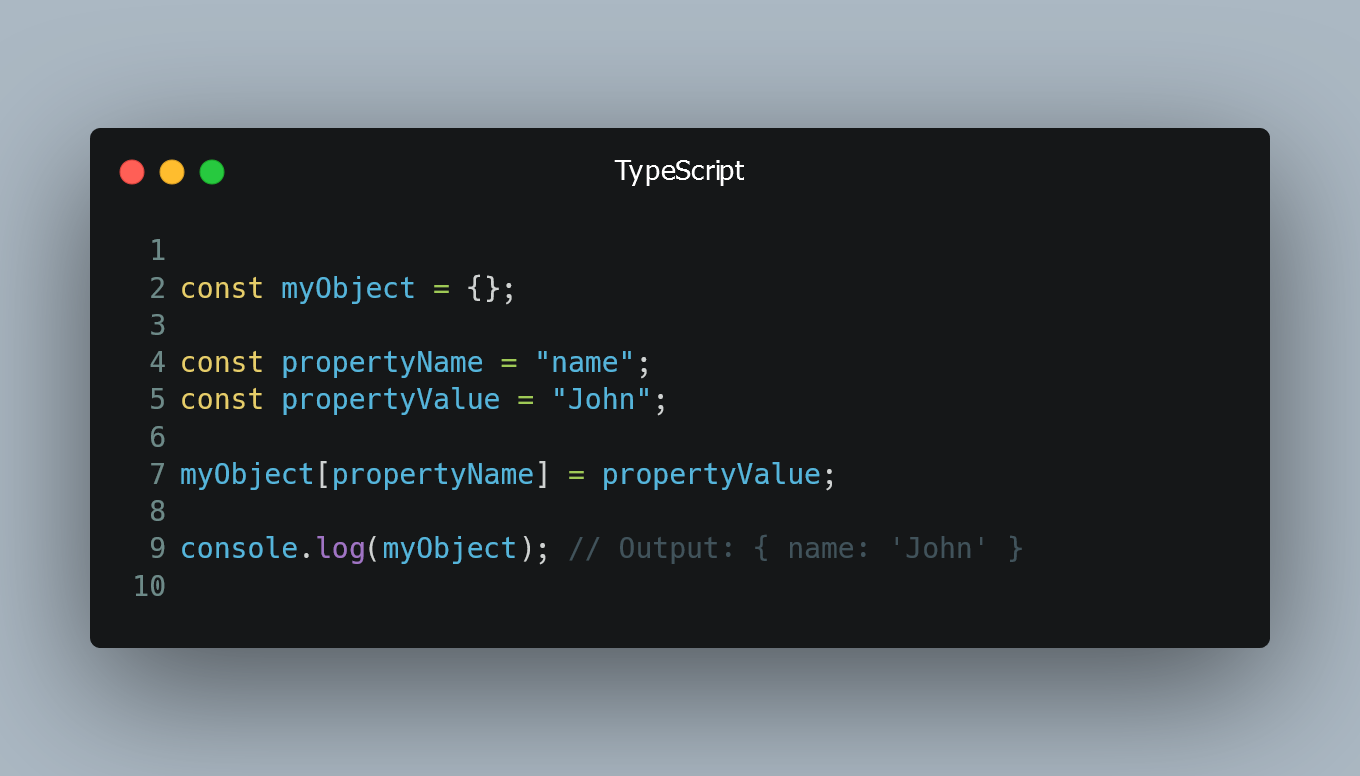
In TypeScript, you can dynamically assign properties to an object using various approaches. Dynamically adding properties allows you to create flexible and extensible data structures based on runtime conditions or user input.
#1. Dot Notation
The simplest way to dynamically add properties to an object is by using dot notation.
const myObject = {};
const propertyName = "name";
const propertyValue = "John";
myObject[propertyName] = propertyValue;
console.log(myObject); // Output: { name: 'John' }
In this example, we create an empty object myObject. We then define propertyName and propertyValue as variables. By using square brackets with the variable propertyName, we can dynamically assign the propertyValue to the object.
#2. Square Bracket Notation
You can also use square bracket notation directly during object creation to assign properties dynamically.
const propertyName = "age";
const propertyValue = 30;
const myObject = {
[propertyName]: propertyValue,
};
console.log(myObject); // Output: { age: 30 }
In this example, we use square brackets during object creation to assign the property propertyName with the value propertyValue.
#3. Object Spread Operator
The object spread operator allows you to create a new object by merging an existing object with additional properties.
const baseObject = { a: 1, b: 2 };
const additionalProperties = { c: 3, d: 4 };
const myObject = { ...baseObject, ...additionalProperties };
console.log(myObject); // Output: { a: 1, b: 2, c: 3, d: 4 }
In this example, we have two objects: baseObject and additionalProperties. By using the object spread operator, we create a new object myObject that combines properties from both objects.
#4. Object.assign()
The Object.assign() method can also be used to merge objects and add properties dynamically.
const baseObject = { a: 1, b: 2 };
const additionalProperties = { c: 3, d: 4 };
const myObject = Object.assign({}, baseObject, additionalProperties);
console.log(myObject); // Output: { a: 1, b: 2, c: 3, d: 4 }
In this example, we use Object.assign() to create a new object myObject by merging baseObject and additionalProperties.
1 Comment


Maps